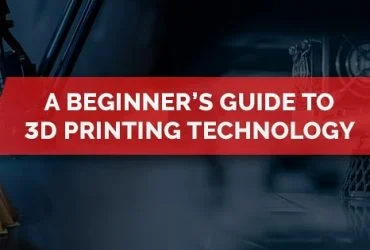The Inevitability of 3D Modeling in Product Design Industry
In today’s rapidly evolving technological landscape, the inevitability of 3D modeling in product design has become more apparent than ever before. From creating prototypes to visualizing complex systems, 3D modeling has transformed the way designers and engineers approach product development. As industries across the globe are embracing digital advancements, 3D modeling has emerged as an indispensable tool that significantly enhances the design process. This article explores why 3D modeling has become a cornerstone in product design and how it continues to revolutionize the industry.

What is 3D Modeling in Product Design?
3D modeling refers to the process of creating a three-dimensional representation of a physical object using specialized software. These virtual models can be manipulated, analyzed, and modified before any physical prototype is produced. In product design, 3D models help designers visualize their ideas, simulate real-world scenarios, and collaborate more effectively. Whether for consumer goods, automotive parts, or architectural designs, 3D modeling plays a crucial role in refining product concepts.
Why 3D Modeling is Inevitable in Product Design
-
Enhanced Visualization and Realism
One of the most significant advantages of 3D modeling in product design is its ability to provide a realistic representation of the product. With 3D visualization, designers can explore intricate details, textures, and materials. This level of clarity helps to avoid misinterpretations that often occur with 2D sketches. Furthermore, the ability to view the product from multiple angles allows for a more comprehensive understanding of its functionality and aesthetic appeal.
-
Accelerated Prototyping
Gone are the days when prototypes were created manually, requiring time-consuming processes. With 3D modeling, the creation of virtual prototypes becomes much faster and more cost-effective. Designers can rapidly test different versions of a product in the digital environment, allowing for quick iterations and improvements. These digital prototypes can then be 3D printed or sent to manufacturing facilities for further testing and production, drastically reducing the lead time.
-
Improved Accuracy and Precision
3D modeling allows for precise design with high levels of accuracy. Designers can use advanced tools to test for measurements, tolerances, and alignments, ensuring that each part of the product fits together seamlessly. By catching potential design flaws early in the process, 3D modeling reduces the risk of errors during manufacturing, leading to fewer costly mistakes and delays.
-
Seamless Collaboration
Product design is rarely a solo endeavor. It often involves multiple stakeholders, including engineers, manufacturers, and marketing teams. 3D models provide a universal platform for collaboration, as they can be easily shared, reviewed, and modified by various team members. This collaborative environment not only improves communication but also ensures that all aspects of the design are considered and optimized before moving forward.
-
Simulation and Testing
Before a product ever reaches the physical prototype stage, it needs to undergo rigorous testing to ensure its functionality and performance. 3D modeling allows for simulations that mimic real-world conditions such as stress, heat, and pressure. Designers can test a product’s durability and performance without having to build an actual prototype. This capability significantly reduces material waste and development costs while improving the final product’s reliability.
-
Customization and Personalization
As consumer demand for personalized products grows, 3D modeling plays a crucial role in facilitating customization. Designers can quickly modify 3D models to accommodate unique requirements, whether it’s changing a product's size, color, or features. This flexibility allows businesses to meet individual customer needs, driving innovation and differentiation in the market.
Conclusion
As technology continues to advance, the role of 3D modeling will only become more integral to creating innovative, high-quality products. By incorporating 3D modeling into their design processes, businesses can streamline workflows, reduce costs, and improve product quality—ensuring success in an increasingly digital world. By partnering with a trusted 3D product modeling company, businesses can streamline workflows, reduce costs, and improve product quality—ensuring success in an increasingly digital world. Embracing this digital transformation through professional 3D product modeling services is no longer optional but essential for companies looking to stay competitive in the ever-evolving marketplace.



